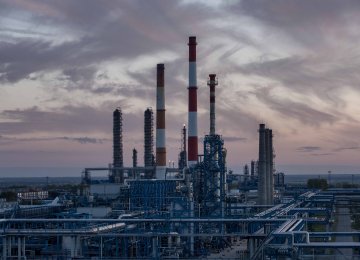Iran will turn into a gasoline exporter by October 2017, when its giant Persian Gulf Star Refinery in the southern port city of Bandar Abbas comes on stream, the managing director of the National Iranian Oil Refining and Distribution Company said.
“The first phase of the refinery will become operational by the end of the current Iranian year (March 20, 2017), which puts an end to the country’s need to import gasoline,” Abbas Kazemi was also quoted as saying by Shana.
Kazemi, who is also a deputy oil minister, made the statements on the sidelines of a conference in Tehran on Tuesday.
The long-awaited Persian Gulf Star Refinery will produce 12 million liters of Euro-4 compliant gasoline per day and 360,000 barrels per day of condensates, once the refinery’s first phase is launched in March.
According to plans, the refinery's output is planned to be largely distributed domestically due to their high quality.
Domestic refineries on average produced 58.5 ml/d of gasoline in the first half of the current fiscal year (started March 20) as imports averaged 12 ml/d, but imports are now down to 4-4.5 million liters a day, Kazemi said.
Referring to the refinery's 95% progress, Kazemi noted that a major part of the progress in the installation of equipment have been achieved in the past two and a half years.
“Most of the equipment were imported following the implementation of the Joint Comprehensive Plan of Action last year and the lifting of sanctions (in January 2016),” he said, pointing to the launch of the refinery’s distillation unit in the past months.
------ Export of Byproducts
Stressing that Iran has become an exporter of petroleum products under President Hassan Rouhani's administration, Kazemi said the export of oil byproducts stands at 500,000 barrels a day.
“According to plans, the volume would rise to 650,000 barrels per day by October next year,” with output of gasoline and other products coming from the Persian Gulf Star Refinery, he added.
On Euro-4 gasoline production, the official said the goal materialized after 15 years of investment.
Plans also call for raising Euro-4 gasoline output at Lavan Refinery in Hormozgan Province from 2.1 million liters per day to close to 3 ml/d in six months.
The complex has the capacity to process up to 60,000 barrels of crude oil per day and receives all of its input from four small- and medium-sized offshore fields in the Persian Gulf.
Kazemi underscored that NIORDC has paid $2.75 billion in taxes in the current year, which is a sign of the significant rise in production.











Add new comment
Read our comment policy before posting your viewpoints